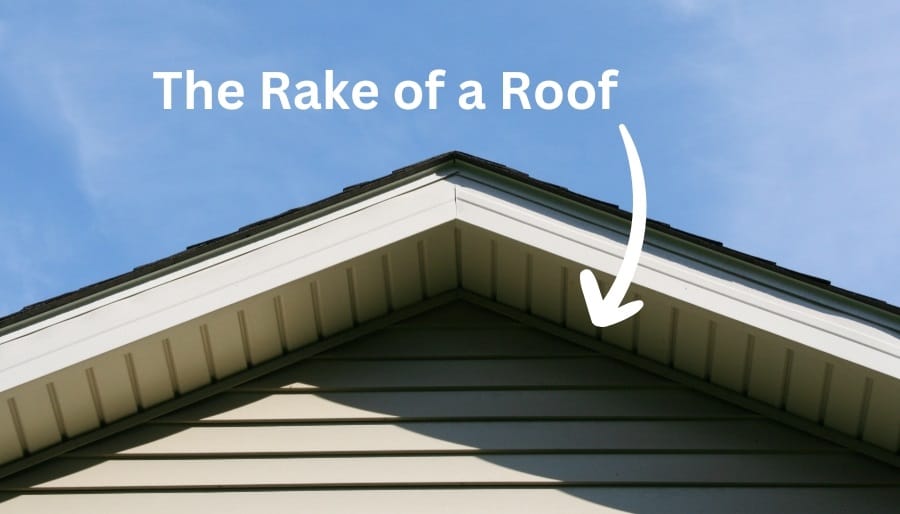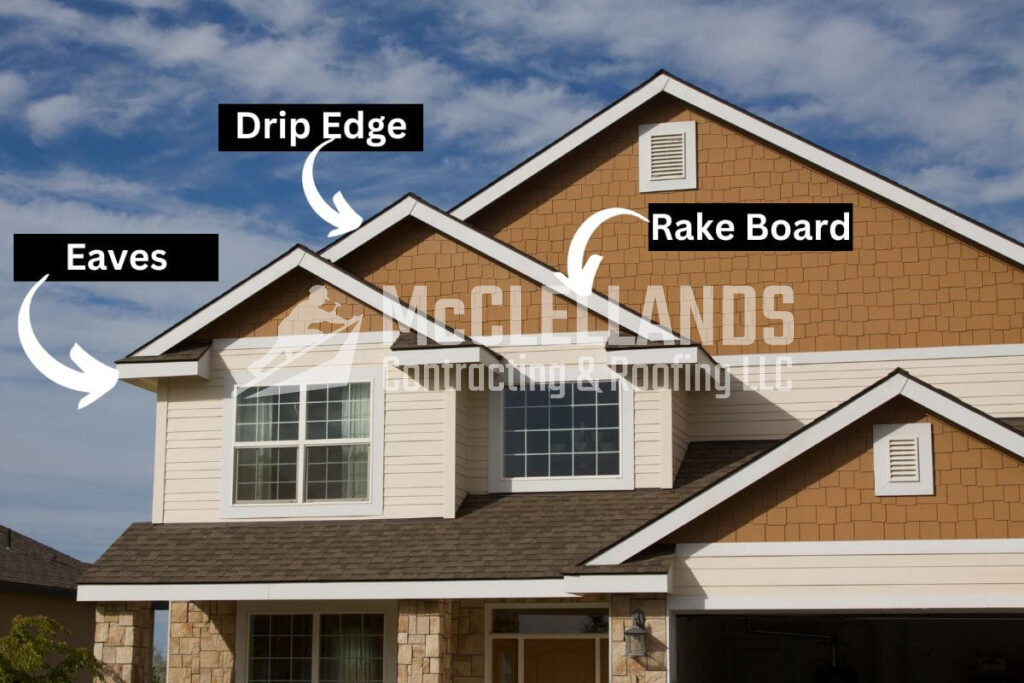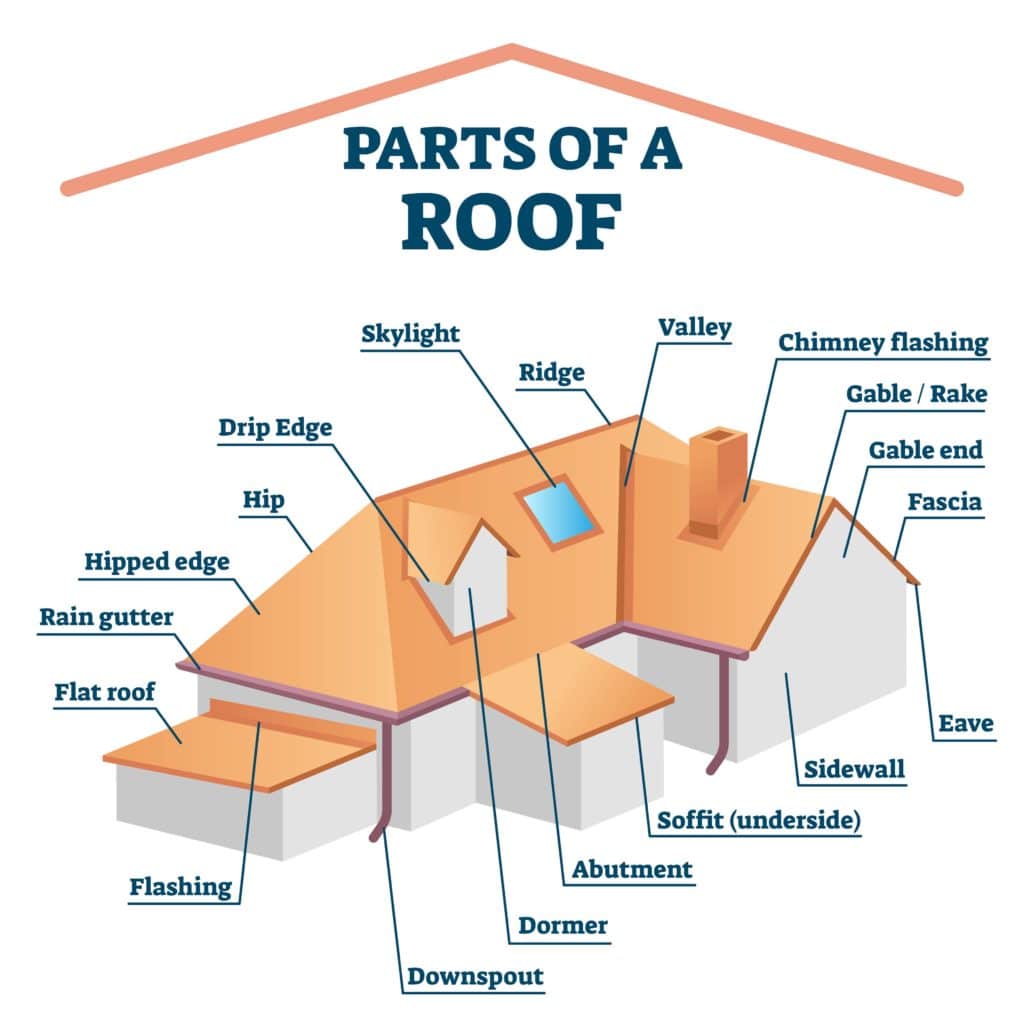Are you preparing for a roofing project and finding yourself increasingly curious about the "rake of a roof"? Understanding the roof rake is essential, as it's not merely an aesthetic detail; it plays a critical role in your roof's performance, longevity, and overall protection of your home.
The roof rake, often a source of confusion, refers to the sloped overhang that extends from the roof's eaves, which is the horizontal edge, up to the ridge. It's a fundamental aspect of roof design, particularly noticeable on gable roofs, where it forms the angled edge at the gable end. This contrasts with the roof eave, which extends beyond the exterior walls of the house.
The term "rake" in roofing can be tricky. It describes a specific angled section, a slanted edge that stretches from the roof's eaves to its ridge. It is often misconstrued with roof rake tools, such as the ones used for snow removal. Its crucial to distinguish between the architectural element and the tools used in roof maintenance.
The rake of a roof is more than just a visual feature; it's a protective component. It helps to shield your home from water intrusion, prevents the accumulation of debris, and mitigates the effects of harsh weather. A well-designed rake detail can significantly enhance your home's curb appeal while ensuring the integrity of your roof system.
Now, lets delve deeper into the components and considerations surrounding this important part of your roof.
| Aspect | Description |
|---|---|
| Rake Definition | The inclined edge of a roof at the gable end, extending from the eaves to the ridge. |
| Eave Definition | Part of the roof extending from the edge of the roof beyond the house's exterior wall. |
| Gable Roof | A roof with two sloping sides that meet at a ridge, forming a triangular end. The rake is prominent on gable roofs. |
| Hip Roof | A roof where all sides slope down to the walls, without a gable. |
| Rake Board | A trim board (also called a verge board or barge board) that runs along the slanted edge of a gable roof, providing a finished edge. |
| Purpose of Rake | Safeguarding the roof's integrity and protecting the home's interior from water intrusion, debris accumulation, and weather impacts. |
| Rake vs. Roof Rake Tool | Rake of a roof refers to the structural component while a roof rake is a tool used for snow removal. |
| Extended Rakes | Wider, overhanging rakes, often with more elaborate soffit details. |
| Materials | Rakes are available in various roofing materials, including PVC, metal, cedar, pine, and concrete. |
| Complementary Design | Rake design should complement the roof's style, e.g., metal rake for a metal roof. |
For more detailed information, you can refer to Home Depot, a trusted source for home improvement and roofing supplies.
The choice of rake detail is vital, especially on gable roofs. If you desire a roof with a generous overhang to provide shelter, an overhanging rake detail is ideal. Conversely, if you prefer a roof where the planes of the roof and walls fold together for a sleek, geometric look, a clipped rake detail would be the best choice.
The aesthetics of the roof rake are essential to your home's curb appeal. The design should be compatible with the eave detail, creating a cohesive look that enhances the overall architectural style of your house.
When considering the roof rake, the materials play a critical role. Various options are available, including PVC, metal, cedar, pine, and concrete, allowing you to choose a material that complements your roof's style and your personal preferences. For instance, if you have a metal roof, it's often best to clad the rake with matching metal to maintain a consistent and appealing aesthetic.
The parts of a roof rake are essential to understand. The rake board is similar to a fascia board but specifically covers the exposed area. This board creates a neat, finished edge and contributes significantly to the roof's curb appeal. It is installed at a perpendicular angle to the roof slope.
Roof flashing and drip edges are also crucial components when discussing rakes. Roof flashing directs water away from critical areas, such as where the roof meets vertical surfaces like chimneys, skylights, and vents. A drip edge is installed on the roof's edges to guide water away from the fascia and soffit. This ensures water runs off properly and protects the underlying structure.
There are different types of rakes. Exposed roof rakes intentionally leave the framing of the eaves visible, creating a rustic or traditional look. Conversely, a covered roof rake features a design where the rake head is enclosed or covered by a protective material, often favored in contemporary settings for its clean lines.
Choosing the appropriate type of roof rake can significantly impact your roof's long-term performance and effectiveness in protecting your home.
Also, it's essential to note the distinction between the rake of a roof and a roof rake tool. The roof rake tool is used for removing snow, whereas the "rake of the roof" refers to the angled section from the eaves to the ridge.
Standard roof rakes feature a simple design, typically with a long handle and a flat blade. A rake rafter or truss is a specially designed roof rafter or truss that creates the rake itself.
In the context of a hip roof, the gable end is replaced by a hip end, and the rake detail is adjusted to accommodate the sloping ends. The hip roof still has a ridge and eaves, just like all peaked roofs.
Knowing if drip edge is required on your roof's rake is crucial for proper water management. The drip edge is installed on the edges of your roof to direct water away from the fascia and soffit, preventing water damage.
The aesthetics of the roof rake are a critical consideration. The roof rake's design significantly impacts your home's exterior appearance. It should complement your home's architectural style and provide a visually pleasing finish to the roofline. The rake board is a key element in achieving this aesthetic. It's installed at a perpendicular angle to the roof slope.
So, as you plan your roofing project, be sure to consider the rake of the roof and the materials, design, and installation techniques to ensure a durable, visually appealing, and protective roof for your home. This attention to detail will not only enhance your home's curb appeal but also protect your investment for years to come.
To successfully style a roof's rake, it's important to be informed about its different parts. The rake board covers the exposed edge of the roof, the roof flashing directs water away from critical areas, and the drip edge helps to direct water away from the fascia and soffit.
When choosing your roof materials, consider the style of your home. For example, if your home has a contemporary design, you might consider a covered roof rake with sleek lines. For a more traditional look, an exposed roof rake might be more appropriate.
When having the roof installed, make sure to install the roof flashing correctly in the areas where the roof plane meets a vertical surface, such as around chimneys, skylights, vents, and other roof penetrations. The drip edge will keep the water away from the fascia and soffit.


